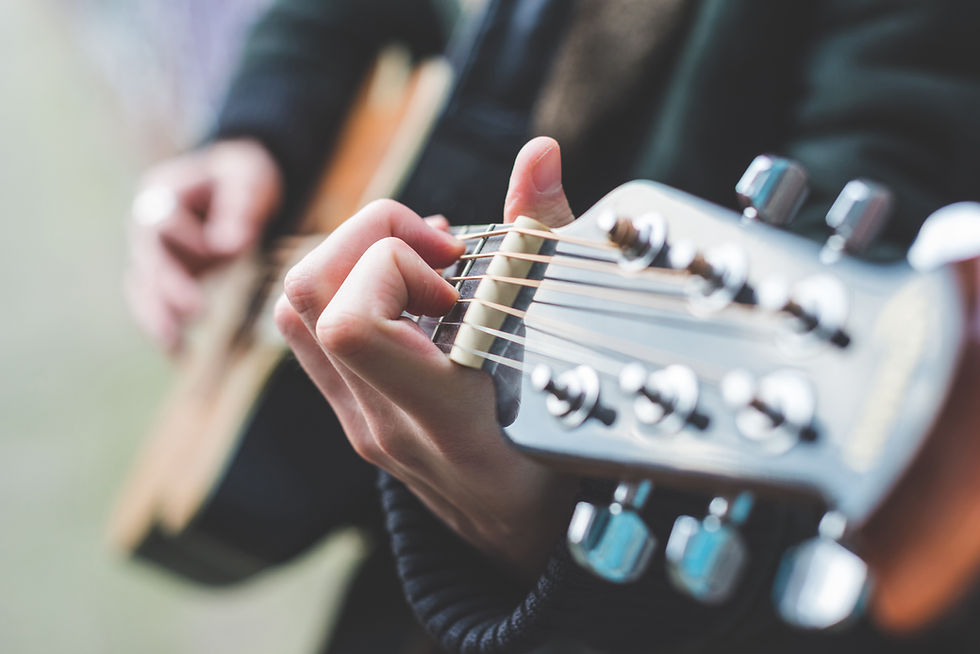Words & Music
- Brittany Groveman

- Sep 18, 2018
- 3 min read
Updated: Nov 26, 2018
First of all, you have to trust yourself...The other thing that you have to do...Be sure to welcome failure. Always say, 'You're OK with me, failure.' Because then you have no fear." - Neil Young
One of the most developed and extraordinary opportunities that I believe the museum offers to students is their Words & Music program. The curriculum emphasizes "Teaching Language Art Through Lyric Writing," essentially English Language Arts, as a content area in the national school curriculum, through songwriting. The unit is 10 lessons total that should have 45-50 minutes dedicated to each. W&M is not a program teachers can decide that they want to do in a weeks notice. It is an intensive unit that teachers have to dedicate time to in their classrooms. To approximate the amount of time it may take to teach a unit to students, here is a basic run through: If a music teacher only gets to meet with a group of students once a week and there are 10 lessons to teach, one may assume it will take 10 weeks to complete the program. In addition to these two and a half months of the teacher's commitment in the classroom, teacher's need to schedule for them to either come into the museum with their class or for the songwriter to come to their school for the songwriter's session. It is the responsibility of the teacher to ensure their students' lyrics are sent to the School Programs team two weeks before the session in order for the songwriter to have a sufficient amount of time to read through all the lyrics and choose which ones they are going to put music to. Six songs are generally chosen by the songwriter.
All the lessons, except the first, start with a free write activity. There is only one rule that students HAVE to follow when it comes to free write - DON'T STOP WRITING. This can just be something a teacher incorporates into their classroom experience everyday. It can be as simple as allowing students 3 minutes to free write after the bell every morning. Students have the opportunity to express themselves and write about what is on their mind without judgement. Trust is built between students and teachers as a result of this curriculum because one learns about what is going on in their students' lives. Additionally, students get insight into each others lives and develop empathy for one another. With an option to co-write, W&M can be a collaborative learning opportunity for students.
Here is a general overview of what the lessons consist of:
Lesson 1: What is Songwriting?
Lesson 2: Parts of a Song
Lesson 3: Subject and Title
Lesson 4: Theme and Message
Lesson 5: Rhythm and Syllables
Lesson 6: Rhyme
Lesson 7: Creating Strong Images
Lesson 8: Focused Lyric-Writing Day
Lesson 9: Revision
Lesson 10: Copyright and Post-Unit Reflection
Each of the lessons go further in depth to explain and describe how the lessons aligns with an aspect of English Language Arts. For example, Lesson 1 encourages students to think about music, songwriting, and what both of these mean to them while Lesson 2 emphasizes how the different parts of a song are used to portray the story. The verse is where you would tell the story of the song using imagery, whereas the chorus is used to clarify the message.
I had the opportunity to attend a professional development workshop for teachers who intend to teach the Words & Music program in their own classroom. This day surprised me as I had no intention of getting as much as I did out of it. According to David, the Words & Music Outreach Coordinator, the average size for these professional development sessions is about 8-10 educators. For this session, however, there were only 3. I was nervous about how the workshop was going to run and I was not even the one running it. The 3 teachers who attended were all from Tennessee. All of them were music teachers, ranging from the preschool level to middle school. One of the elementary school teachers pointed out her concerns about doing this program with her students. Her students are primarily Hispanic and African American with many being from a small community in Guatemala. For these students, it is essential that the songwriter who attends their songwriter's session is bilingual. This is an important offering that the museum provides given that many of the students served in the Nashville area are English Language Learners (ELL) with Spanish being their first language. Especially with young children, it is vital that the musician can cater to their language needs in order for them to get the most out of the program.




Comments